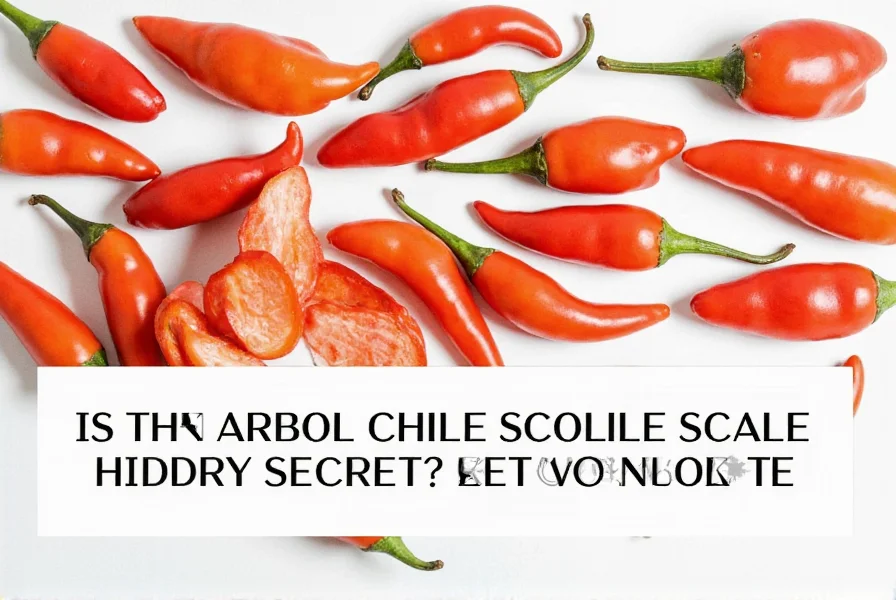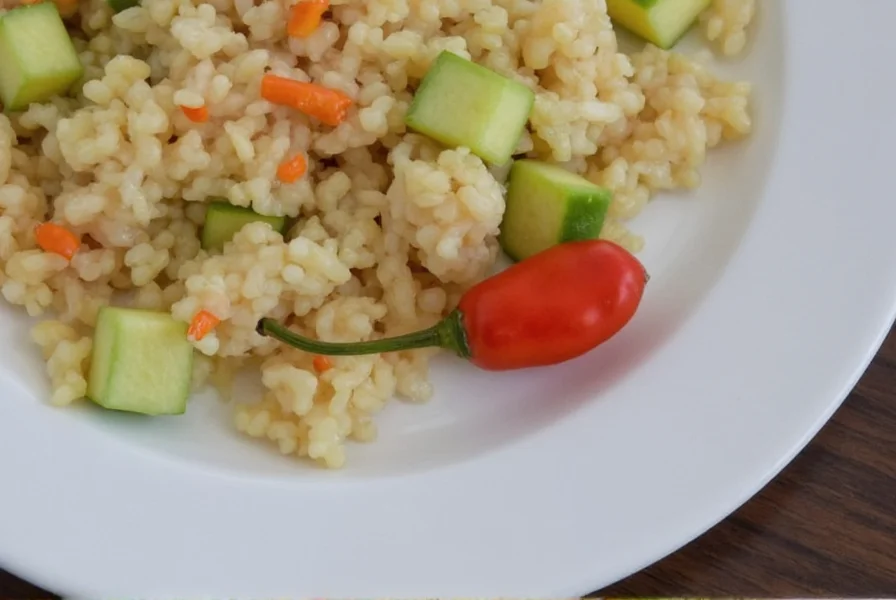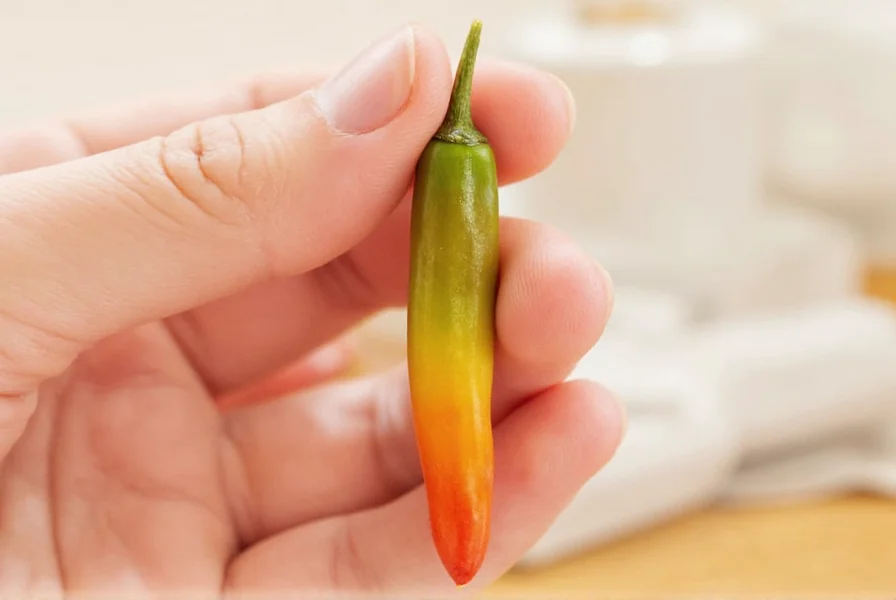Table of Contents
Introduction to Small Hot Peppers
Many people believe there's a "smallest hottest pepper"—a tiny pod with extreme heat—but this is a common misconception. In reality, the hottest peppers like the Carolina Reaper are not small (typically 1-2 inches long), while small peppers like the Pequin have moderate heat. Understanding the actual size and heat levels of peppers is crucial for safe handling and culinary use. This guide clarifies the facts, provides accurate comparisons, and offers practical advice for working with hot peppers of all sizes.

Pepper Comparison: Size and Heat Facts
| Pepper | Scoville Units | Size |
|---|---|---|
| Pequin Pepper | 30,000–60,000 | Small (0.5 inch) |
| Bird's Eye Chili | 50,000–100,000 | Small (0.5-1 inch) |
| Habanero | 100,000–350,000 | Small to medium (1-2 inches) |
| Ghost Pepper | 850,000–1,000,000 | Medium (1-2 inches) |
| Carolina Reaper | 1,500,000–2,200,000 | Medium (1-2 inches) |
Key facts: The hottest peppers (e.g., Carolina Reaper) are medium-sized, not small. Small peppers like Pequin have moderate heat. There is no pepper that is both "smallest" and "hottest"—this is a myth. Always check Scoville ratings for accurate heat levels.

Practical Tips for Handling and Cooking with Hot Peppers
When working with hot peppers, safety and accuracy are essential. Here are evidence-based tips:
- Always wear nitrile gloves: Capsaicin can cause severe skin irritation. Latex gloves are ineffective; use nitrile for proper protection.
- Wash hands and surfaces thoroughly: Use soap and water after handling. Avoid touching your face until cleaned.
- Start with small amounts: For peppers like Habanero or Ghost Pepper, begin with a tiny slice. Heat builds gradually, so you can adjust as needed.
- Pair with balancing ingredients: Use dairy (yogurt, sour cream), fats (avocado, coconut milk), or acidic elements (lime juice) to neutralize heat without overpowering flavor.
- Store properly: Refrigerate fresh peppers in sealed containers. For dried peppers, store in a cool, dark place to preserve potency.
Remember: Cooking does not reduce capsaicin levels. Always prioritize safety—misinformation about pepper heat can lead to accidental burns or discomfort.
Buying Guide: Finding Small Hot Peppers
When shopping for hot peppers, focus on accurate heat levels and size, not myths. Here's how to choose:
Common Small Hot Peppers
- Pequin Pepper: Mild to medium heat (30k-60k Scoville), small size (0.5 inch), with smoky, fruity notes. Ideal for salsas and sauces.
- Bird's Eye Chili: Medium heat (50k-100k Scoville), small (0.5-1 inch), commonly used in Thai cuisine. Adds bright, sharp heat.
- Habanero: High heat (100k-350k Scoville), small to medium size (1-2 inches), with tropical fruit flavors. Best for marinades and hot sauces.
Where to Buy
- Specialty spice shops: Like Penzeys Spices or Spice Islands for fresh, high-quality peppers with detailed Scoville ratings.
- Farmers' markets: Often carry locally grown varieties; ask vendors about heat levels and origin.
- Online retailers: Amazon or Pepper Palace offer verified customer reviews for accuracy. Check for third-party certifications (e.g., USDA organic).
What to Look For
- Scoville rating: Verify with reputable sources (e.g., USDA or pepper-growing associations). Avoid vague claims like "extremely hot" without numbers.
- Appearance: Choose peppers that are firm, vibrant in color, and free of mold or blemishes.
- Source transparency: Prefer suppliers who provide growing details (e.g., region, harvest date) for freshness and safety.

Frequently Asked Questions About Hot Peppers
Is there a "smallest hottest pepper" in the world?
No, there is no such thing as a "smallest hottest pepper." The hottest peppers (e.g., Carolina Reaper) are medium-sized (1-2 inches), while small peppers like Pequin have moderate heat (30k-60k Scoville). This is a common myth—always rely on verified Scoville ratings for accuracy.
How does the heat of small peppers compare to common hot peppers?
Small peppers like Pequin (30k-60k Scoville) are 10-20 times hotter than jalapeños (2,500-8,000 Scoville), but far milder than Carolina Reaper (1.5M-2.2M Scoville). For reference: Bird's Eye Chili (50k-100k) is 20-40 times hotter than jalapeños, while Habanero (100k-350k) is 40-140 times hotter. Always check specific Scoville ratings, as heat varies by pepper type and growing conditions.
What flavors do small hot peppers have beyond heat?
Small peppers often have distinct flavor profiles: Pequin offers smoky, nutty notes; Bird's Eye Chili has citrusy, floral undertones; Habanero brings tropical fruitiness. Heat builds gradually, starting with flavor before the burn—this makes them versatile for culinary use when balanced properly.
How should I handle small hot peppers safely?
Wear nitrile gloves (latex won't protect you), work in a ventilated area, and never touch your face. After handling, wash hands with soap and water. If skin contact occurs, use milk or a capsaicin remover (not water, which spreads oil). For eye exposure, rinse immediately with cool water and seek medical help.
Can I grow small hot peppers at home?
Yes! Pequin and Bird's Eye Chili thrive in containers with 6-8 hours of sunlight, well-draining soil, and consistent watering. Start seeds indoors 8-10 weeks before frost. Plants stay compact (12-24 inches tall), perfect for small spaces. Always wear gloves during harvesting.
What should I do if I eat too much hot pepper?
Consume dairy (milk, yogurt) to neutralize capsaicin with casein protein. Avoid water, which spreads the oil. Sugar or honey can help, but dairy is most effective. For severe reactions (e.g., vomiting, difficulty breathing), seek emergency medical care. Effects typically last 20-45 minutes—stay calm and hydrated.
How can I use small hot peppers without overwhelming a dish?
Start with minimal amounts (e.g., one seed or a tiny slice). Remove seeds and membranes for less heat. Infuse oils or vinegars for controlled distribution. Pair with fats (avocado, coconut milk) to balance capsaicin. Remember: cooking doesn't reduce heat—always test before adding more.
Are there health benefits to eating hot peppers?
Yes, capsaicin in peppers may reduce inflammation, boost metabolism, and provide pain relief. Studies show potential cardiovascular benefits. However, moderation is key—excessive consumption can cause digestive issues. Consult a healthcare provider for personalized advice, especially if you have medical conditions.
Conclusion
Understanding the true size and heat of hot peppers is essential for safe, enjoyable cooking. There is no "smallest hottest pepper"—the hottest varieties are medium-sized, while small peppers like Pequin have moderate heat. By relying on verified Scoville ratings and practical handling tips, you can confidently incorporate hot peppers into your dishes without risk. Always prioritize accuracy over myths to ensure a positive culinary experience.













 浙公网安备
33010002000092号
浙公网安备
33010002000092号 浙B2-20120091-4
浙B2-20120091-4